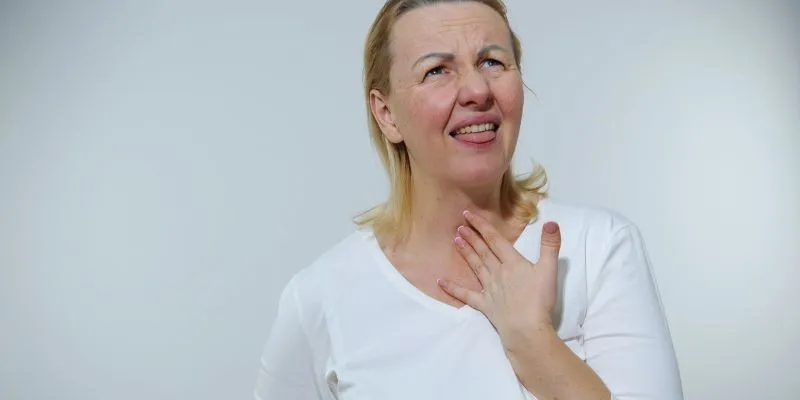How To Treat Vocal Cord Paralysis
Losing your voice or having trouble speaking can be both aggravating and distressing. Vocal cord paralysis—a condition where one or both vocal cords lose their ability to move—can significantly impact your voice, breathing, and swallowing. Causes of this disorder include viral infections, nerve injury, or surgical trauma. If left untreated, it can affect your overall quality of life and daily communication.
Fortunately, effective treatment options are available to help you regain your confidence and vocal abilities. From advanced surgical techniques to speech therapy and voice exercises, personalized treatments exist for everyone. This article will guide you on how to treat vocal cord paralysis, manage symptoms, and choose the best care for your needs, allowing you to take charge of your health.

Understanding Vocal Cord Paralysis
Vocal cords are flexible bands of muscle located in the larynx, or voice box. As air flows over these cords, they vibrate to produce sound, enabling us to speak, sing, or convey messages. Paralysis occurs when one or both vocal cords lose their ability to move, affecting the sounds you produce and, occasionally, your ability to breathe or swallow properly. This condition is often caused by nerve damage or disruption.
Complications from neck or chest surgeries, viral infections affecting the nerves, or physical injuries to the throat area can all contribute to this condition, depending on the cause. Paralysis can also result from other medical conditions, including neurological disorders or tumors. Effective treatment relies on understanding the root causes and symptoms.
Types of Vocal Cord Paralysis
The type of vocal cord paralysis one experiences is determined by the number of affected vocal cords and their position during paralysis. There are two primary forms: unilateral and bilateral vocal cord paralysis.
- Unilateral Vocal Cord Paralysis: This occurs when one vocal cord is paralyzed while the other functions normally. It often causes hoarseness, a breathy voice, and difficulty projecting sound. Swallowing issues may also arise since the paralyzed cord cannot effectively close to prevent food or liquids from entering the airway.
- Bilateral Vocal Cord Paralysis: This type involves paralysis of both vocal cords. Though rarer, it is more severe. Depending on whether the cords are fixed in an open or closed position, it can lead to significant speech or breathing difficulties. When both cords are positioned close together, the airway may be severely obstructed, necessitating emergency interventions like a tracheotomy to ensure proper airflow.
Symptoms of Vocal Cord Paralysis
The range of symptoms associated with vocal cord paralysis depends on the severity of the condition and whether one or both vocal cords are affected. Common symptoms include hoarseness, a weak or breathy voice, and reduced vocal strength, making it hard to speak loudly or effectively. You might also find yourself frequently clearing your throat or feeling that your voice tires quickly.
Swallowing difficulties are another common issue, as paralyzed vocal cords may allow food or liquids to enter the airway, causing coughing or choking. If both vocal cords are compromised, breathing problems may occur, leading to airway obstruction and difficulty inhaling or exhaling fully. With unilateral paralysis, symptoms may be less severe, and some vocal function may remain.

Diagnosis of Vocal Cord Paralysis
An otolaryngologist, or ENT specialist, conducts a thorough evaluation to diagnose vocal cord paralysis. The process usually begins with a laryngoscopy—a procedure in which a small, flexible camera is inserted through the nose or mouth to view the vocal cords. This allows the doctor to observe the movement and alignment of the vocal cords, identify signs of paralysis, and assess the extent of the condition.
If laryngoscopy confirms vocal cord paralysis, further investigation may be needed to determine the underlying cause. Imaging studies, such as MRIs or CT scans, can help identify structural abnormalities in the neck or chest that may be contributing to symptoms or causing nerve damage or tumors. In some cases, additional nerve tests, like electromyography (EMG), can measure nerve and muscle activity in the vocal cords.
Non-Surgical Treatment Options
Non-surgical treatment options include:
- Speech Therapy: Speech therapy is often one of the first treatments for vocal cord paralysis. A speech therapist can teach you how to use your vocal cords more effectively, provide breathing exercises, and help improve voice quality. Therapy can prevent further strain on the vocal cords and significantly enhance speech clarity.
- Voice Rest and Hydration: Rest and proper hydration can sometimes benefit individuals with mild vocal cord paralysis. Keeping your vocal cords moist helps maintain flexibility and reduces discomfort. Additionally, avoiding excessive talking or whispering allows the vocal cords to heal and function correctly.
- Medications: In some cases, medications can help address underlying conditions causing vocal cord paralysis. Corticosteroids, for example, may reduce inflammation when infection or swelling is responsible for the condition. Medications can also help manage dryness and coughing.
Invasive Treatment Options
If non-surgical treatments do not yield significant improvement, more invasive options may be considered.
- Vocal Cord Injection: Vocal cord injections are a common treatment for vocal cord paralysis. This procedure involves injecting a substance—such as collagen, fat, or gel—into the paralyzed vocal cord to add volume and improve closure, promoting normal vocal function.
- Thyroplasty: Thyroplasty is a surgical procedure where a small implant is placed in the thyroid cartilage to push the paralyzed vocal cord toward the center. This ensures proper closure of the vocal cords during speaking or swallowing.
- Laryngeal Reinnervation Surgery: Laryngeal reinnervation surgery reconnects the nerve to the vocal cord. This procedure aims to restore movement to the paralyzed vocal cord by using a healthy nerve from another part of the body. Typically used in cases of long-term vocal cord paralysis, this surgery seeks to reestablish normal vocal cord movement.
Conclusion
Vocal cord paralysis can profoundly impact your voice, breathing, and quality of life. Whether through non-invasive or surgical means, early diagnosis and personalized treatment options can help restore vocal function and improve daily communication. For mild cases, speech therapy, voice rest, and medications are effective; for more severe conditions, surgical options like thyroplasty and laryngeal reinnervation are considered. Understanding the root cause and working closely with a healthcare professional is crucial in finding the most suitable solution.











